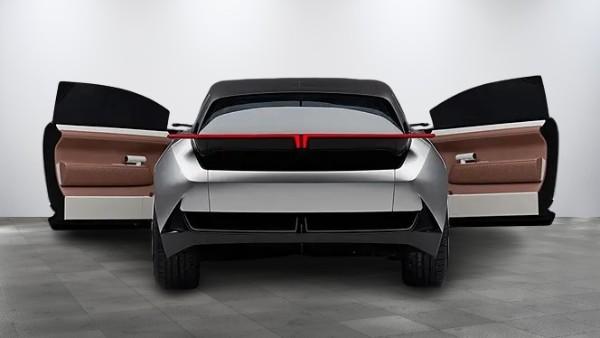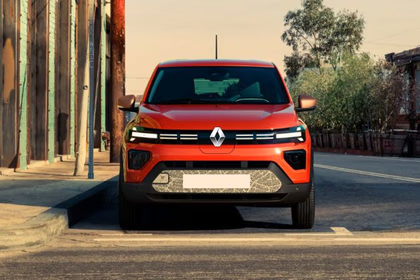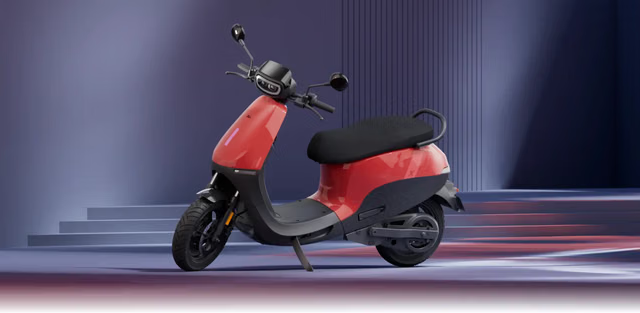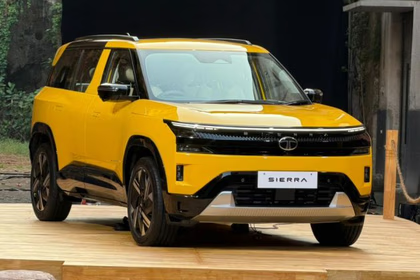During its transformation period, Tata Motors transitioned from being the mass-vehicle affordability innovator of Indian auto markets into an organization that now creates sustainable futuristic mobility solutions.
- The Tata Nano: A Vision of Affordable Mobility
- The Transition: Learning from Nano’s Journey
- Avinya: A Glimpse into the Future
- The Vision Behind Avinya
- Design and Aesthetics
- Revolutionary Architecture and Performance
- Key performance features include:
- Sustainability and Eco-conscious Approach
- The Road Ahead: Tata Motors’ Future in EVs
- The Impact: How Tata Motors is Shaping the Future of Mobility
- Conclusion
- FAQs
Since its start with the Tata Nano the automotive manufacturer continues achieving innovation milestones toward the Tata Avinya which demonstrates future electric mobility. The Indian automobile sector is undergoing a fundamental transformation because manufacturers now direct their efforts toward cutting-edge technology while honoring sustainability goals along providing luxury features.
The Tata Motors Avinya demonstrates how the company understands current customer requirements by prioritizing green technologies alongside premium performance capabilities. The company is transforming the transportation industry and Indian automotive benchmarks as it leads its country towards a new era of mobility through these initiatives.
The Tata Nano: A Vision of Affordable Mobility
The Birth of Tata Nano
Tata Motors began its Nano production in 2008 by releasing this game-changing automobile which served Indian families with a two-wheeler replacement option. Through his visionary leadership, Ratan Tata designed the Tata Nano to reach marketing success levels that made automobile ownership accessible to Indian families from all economic tiers.
When the Tata Nano launched its factory in 2008 the manufacturing team introduced it as the planet’s cheapest automobile for an initial cost of approximately ₹1 lakh. The Nano offered a viable idea of providing an affordable and safe car that could house small families while remaining economical and space-efficient.

Bharat Mobility Expo 2025 showcases 22 upcoming electric vehicles you need to see during your visit!
Features and Design
The Tata Nano received design features that aimed to deliver maximum efficiency combined with affordable costs. The Indian automotive market received a unique feature when the Nano introduced a lightweight frame structure using a rear-engine and rear-wheel-drive setup.
The car had barebones interior design elements and only fundamental safety equipment together with rudimentary luxury amenities. Despite its low price point, the car followed production specifications that exceeded fuel efficiency and emission standards compared to similar models.
Challenges and Market Response
While the Tata Nano was initially met with enthusiasm, it faced several challenges:
- Production Delays: The relocation of its production plant from Singur, West Bengal, to Sanand, Gujarat, due to land acquisition issues, led to delays.
- Safety Concerns: Reports of Nano cars catching fire created apprehension among buyers.
- Brand Perception: Marketing the Nano as the “cheapest car” inadvertently led to it being perceived as a “poor man’s car,” deterring aspirational buyers.
- Competition: The emergence of feature-rich, slightly higher-priced competitors like the Maruti Alto made buyers reconsider their options.
Despite its innovative approach, these factors contributed to its eventual discontinuation in 2018.
The Transition: Learning from Nano’s Journey
Tata Motors understood that they needed to adjust their products after Nano failed to meet changing market demands. The company shifted priorities away from budget car sales toward developing modern technologies along with safety measures and environmentally friendly features.
The company used this shift to create the basis for a new Tata Motors design philosophy resulting in electric vehicle (EV) development and future mobility solutions.
The Rise of Electric Mobility in India
Tata Motors transformed its business direction toward sustainable and smart mobility after environmental worries combined with government EV promotion policies. When Tata Motors released the Tata Tigor EV and Tata Nexon EV they experienced notable market success in the Indian EV landscape. After the success of its past electric models, Tata Motors launched the Avinya concept which introduced future-ready electric mobility solutions.
Avinya: A Glimpse into the Future
The Vision Behind Avinya
In 2022 Tata Motors introduced the Avinya concept as their breakthrough toward present and future automotive innovation. The Sanskrit word innovation served as the origin for the creation of Avinya which represents Tata Motors’ specific perspective about mobility features sustainable modern technology with a human-centred design emphasis.
The Tata Nano focused on cheaper prices yet the Avinya presents a product combining high-end features with modern EV systems and energy efficiency technology.
Design and Aesthetics
The Avinya concept incorporates a revolutionary exterior that finds its inspiration from catamaran vessels. The innovative vehicle body merges premium hatchback elements with SUV and MPV features to set new standards of mobility. Its most unusual design features include:
- Butterfly Doors: Providing a grand and futuristic entrance to the vehicle.
- Screen-less Interior: A departure from conventional dashboards, focusing on minimal distractions.
- Sustainable Materials: Use of eco-friendly materials throughout the cabin to enhance sustainability.
- Panoramic Sunroof: Enhancing the sense of space and openness for passengers.
- LED Signature Lighting: A futuristic LED strip running across the front and rear, serving as a brand identity marker.
Revolutionary Architecture and Performance
The Tata Avinya concept car implements Pure EV GEN 3 architecture from Tata Motors to achieve maximum efficiency combined with safety standards. The vehicle structure achieves flexibility across all environments while its weight optimization process integrates advanced electronic components.
Key performance features include:
- Ultra-fast Charging: Users can achieve ultra-fast charging capabilities that enable the car to reach 500 kilometres of range within 30 minutes.
- High Structural Safety: The system ensures high structural safety by fulfilling global safety standards so it provides dependable protection for passengers.
- Lightweight Design: The vehicle possesses both a lightweight framework and aerodynamic shaping that leads to maximum efficiency in performance.
- Enhanced AI Integration: Smart AI-driven interfaces for intuitive driving and user experience.
Sustainability and Eco-conscious Approach
The sustainability approach serves as the fundamental principle guiding Tata Motors in its Avinya concept development. The interior design of the vehicle features environmentally friendly materials that are both natural and recycled products.
The Avinya switches up its infotainment approach by using voice commands to replace digital displays because this strategy helps drivers stay focused and lower their screen-time exhaustion.
The Road Ahead: Tata Motors’ Future in EVs
Market Expansion and Upcoming Launches
Tata Motors revealed its plans for a substantial EV portfolio development that includes brand-new production models derived from the Avinya concept with their introduction set for 2025. The company targets both domestic and international customers through its GEN 3 platform which will support different vehicle lines.
Strengthening India’s EV Ecosystem
To accelerate EV adoption, Tata Motors is working on:
- Charging Infrastructure: More EV charging stations will be established by uniting forces with national energy suppliers.
- Battery Technology: The company utilizes funds to develop enhanced battery technologies that create improved performance and longer-lasting operations.
- Policy Advocacy: The company works together with government authorities to build beneficial EV policies and financial benefits for customers.
- Affordability Strategies: The company is developing accessibility approaches which include financing options and government subsidies to reduce the cost of EVs.
The Impact: How Tata Motors is Shaping the Future of Mobility
Redefining Consumer Expectations
The launch of Avinya car by tata marks a new standard for Tata Motors in the Indian automotive sector. The company adapted from its affordable Nano model towards the premium sustainable Avinya solution which indicates its ability to meet shifting consumer needs.
Driving India’s Electric Revolution
Tata Motors actively supports electric mobility through its strategies because India seeks to reach net-zero emissions by 2070. Through their leadership role in EV innovation, Tata Motor creates two effects: they reduce their carbon footprint while stimulating other manufacturers to embrace cleaner technologies.
Inspiring Global Innovation
Tata Motors’ journey from the Nano to Avinya showcases its resilience and adaptability. Tata Motors now stands strong among international EV manufacturers including Tesla, Hyundai and Volkswagen because of the global success of its Avinya concept.
Conclusion
From its inception with the Tata Nano to its evolution with the Avinya Tata Motors demonstrates extraordinary development in its product offerings. The Nano tried to revolutionize affordable mobility but the Avinya declares a new future of premium transportation with environmental responsibility and state-of-the-art technology.
Tata Motors maintains a position to define upcoming automotive development trends through its continuing innovation and adaptivity. Tata Motors uses revolutionary electric vehicle technology innovative design creation and environment-friendly programs as it leads the way into the future of automotive advancements.
Disclaimer
This blog provides only information for educational purposes. Tata Motors continues making efforts to maintain accuracy while their production information along with plans and specifications remain subject to future modifications.
The Tata Avinya exists only as a concept and may not become available for sale by Tata Motors. Readers should consult official announcements from Tata Motors regarding the latest information on all company updates.
FAQs
1. What is the Tata Avinya concept?
Tata Motors launched the Avinya concept as their design representation for future-generation sustainable automobiles that operate exclusively using electric power. The vehicle emphasizes creative design together with luxury treatment through environmentally responsible technology.
2. When was the Tata Avinya concept first introduced?
The Tata Avinya concept made its debut in 2022 to demonstrate Tata Motors’ dedication to developing the electric vehicle market of tomorrow.
3. Will the Tata Avinya be available for purchase?
Production of the Avinya as a concept car remains unavailable at present. The future EVs from Tata Motors will utilize its existing design and technological features.
4. What makes the Tata Avinya different from other Tata EVs?
Tata Avinya concept delivers advanced AI technology with a luxurious minimalistic design automated security functions and extended electric operating range.
5. How does Tata Avinya contribute to sustainability?
The powertrain system along with green technologies and sustainable materials that Avinya employs functions to cut down carbon emissions while establishing ecologically friendly transport options.





